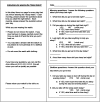Wrist actigraphy
- PMID: 21652563
- PMCID: PMC3109647
- DOI: 10.1378/chest.10-1872
Wrist actigraphy
Abstract
To record sleep, actigraph devices are worn on the wrist and record movements that can be used to estimate sleep parameters with specialized algorithms in computer software programs. With the recent establishment of a Current Procedural Terminology code for wrist actigraphy, this technology is being used increasingly in clinical settings as actigraphy has the advantage of providing objective information on sleep habits in the patient's natural sleep environment. Actigraphy has been well validated for the estimation of nighttime sleep parameters across age groups, but the validity of the estimation of sleep-onset latency and daytime sleeping is limited. Clinical guidelines and research suggest that wrist actigraphy is particularly useful in the documentation of sleep patterns prior to a multiple sleep latency test, in the evaluation of circadian rhythm sleep disorders, to evaluate treatment outcomes, and as an adjunct to home monitoring of sleep-disordered breathing. Actigraphy has also been well studied in the evaluation of sleep in the context of depression and dementia. Although actigraphy should not be viewed as a substitute for clinical interviews, sleep diaries, or overnight polysomnography when indicated, it can provide useful information about sleep in the natural sleep environment and/or when extended monitoring is clinically indicated.
Figures



References
-
- Tryon W, Bellak A, Hersen M. Activity Measurement in Psychology and Medicine. New York, NY: Plenum Press; 1991.
-
- Thorpy M, Chesson A, Derderian S, et al. American Sleep Disorders Association Practice parameters for the use of actigraphy in the clinical assessment of sleep disorders. Sleep. 1995;18(4):285–287. - PubMed
-
- Littner M, Kushida CA, Anderson WM, et al. Standards of Practice Committee of the American Academy of Sleep Medicine Practice parameters for the role of actigraphy in the study of sleep and circadian rhythms: an update for 2002. Sleep. 2003;26(3):337–341. - PubMed
-
- Morgenthaler T, Alessi C, Friedman L, et al. Standards of Practice Committee; American Academy of Sleep Medicine Practice parameters for the use of actigraphy in the assessment of sleep and sleep disorders: an update for 2007. Sleep. 2007;30(4):519–529. - PubMed
-
- Wang SY, Chang HJ, Lin CC. Sleep disturbances among patients with non-small cell lung cancer in taiwan: congruence between sleep log and actigraphy. Cancer Nurs. 2010;33(1):E11–E17. - PubMed

